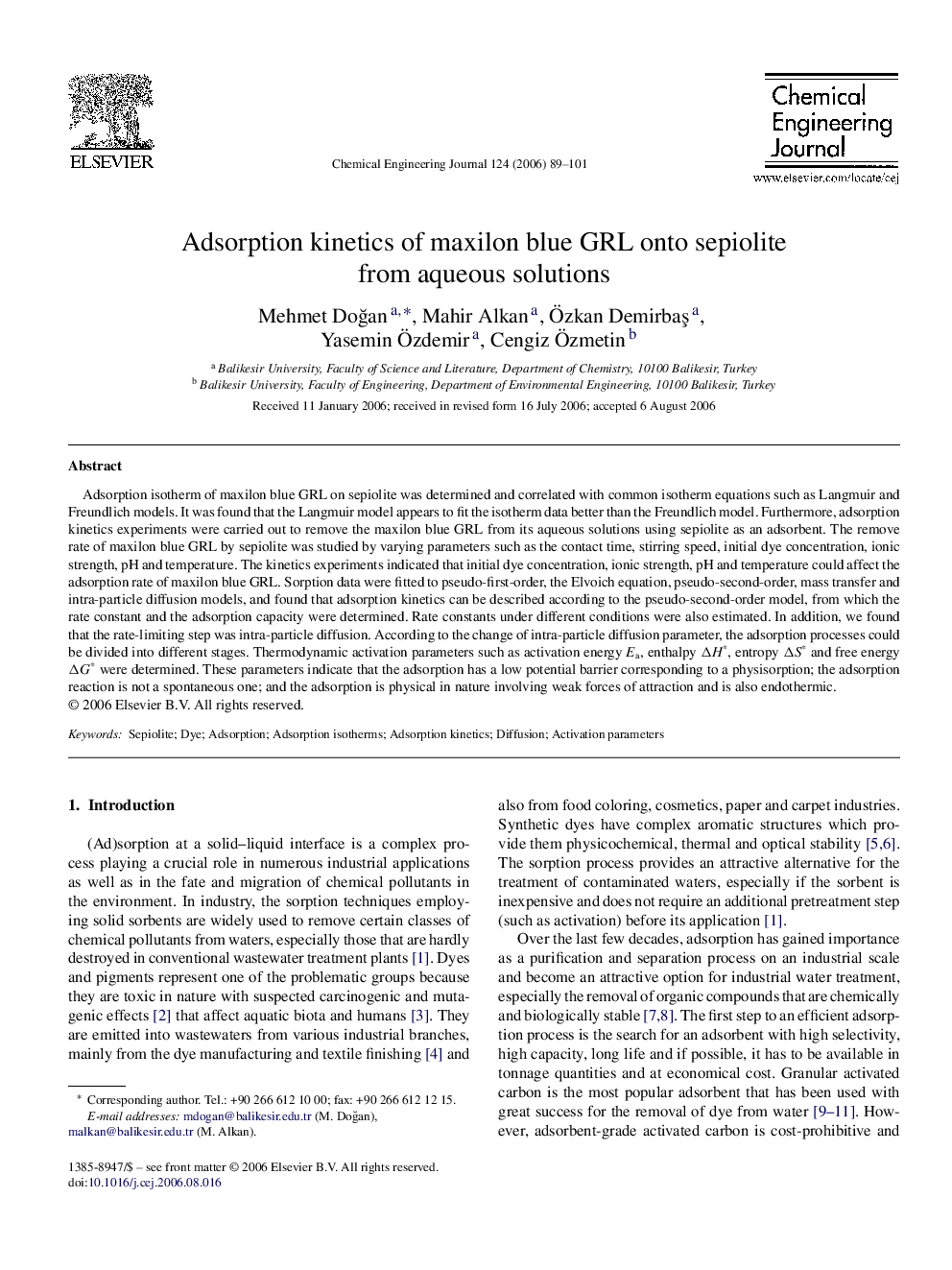| Article ID | Journal | Published Year | Pages | File Type |
|---|---|---|---|---|
| 154167 | Chemical Engineering Journal | 2006 | 13 Pages |
Adsorption isotherm of maxilon blue GRL on sepiolite was determined and correlated with common isotherm equations such as Langmuir and Freundlich models. It was found that the Langmuir model appears to fit the isotherm data better than the Freundlich model. Furthermore, adsorption kinetics experiments were carried out to remove the maxilon blue GRL from its aqueous solutions using sepiolite as an adsorbent. The remove rate of maxilon blue GRL by sepiolite was studied by varying parameters such as the contact time, stirring speed, initial dye concentration, ionic strength, pH and temperature. The kinetics experiments indicated that initial dye concentration, ionic strength, pH and temperature could affect the adsorption rate of maxilon blue GRL. Sorption data were fitted to pseudo-first-order, the Elvoich equation, pseudo-second-order, mass transfer and intra-particle diffusion models, and found that adsorption kinetics can be described according to the pseudo-second-order model, from which the rate constant and the adsorption capacity were determined. Rate constants under different conditions were also estimated. In addition, we found that the rate-limiting step was intra-particle diffusion. According to the change of intra-particle diffusion parameter, the adsorption processes could be divided into different stages. Thermodynamic activation parameters such as activation energy Ea, enthalpy ΔH*, entropy ΔS* and free energy ΔG* were determined. These parameters indicate that the adsorption has a low potential barrier corresponding to a physisorption; the adsorption reaction is not a spontaneous one; and the adsorption is physical in nature involving weak forces of attraction and is also endothermic.
